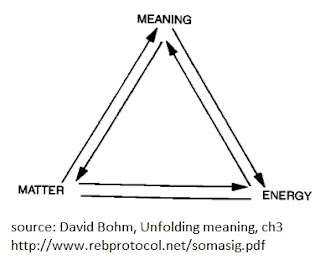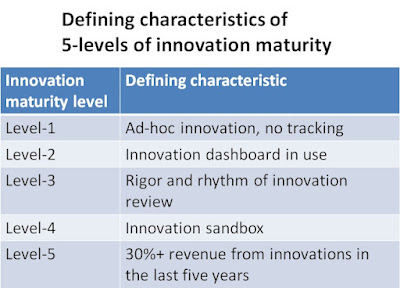I have been reading Ramana Maharshi (RM) for the past twenty-five years. However, Upadesa Saram (The essence of the teaching) is special because it is the only text which I am able to read currently in the same language that Ramana Maharshi wrote in – Sanskrit. It was originally composed in Tamil (1927) and RM himself translated it in three other languages – Telugu, Malayalam, and Sanskrit. Ramana Maharshi championed the self-inquiry approach and suggested that “Who am I?” is the most important question in spirituality (and perhaps life itself). Upadesa Saram has 30 verses. In this article, I have selected four that highlight the self-inquiry approach. For each verse, we will see it in the Devanagari script and English, followed by my English translation (hence, all errors are mine). Then I have given some text sourced from “Talks with Ramana Maharshi” which I feel is relevant to the verse. Finally, I have added my comments to each verse based on my limited understanding. There is a beautiful rendering of Upadesa Saram on YouTube (verse 16 starts at 2:50).
Verse 16:
दृश्यवारितं चित्तमात्मनः ।
चित्त्वदर्शनं तत्त्वदर्शनं ॥16॥
drsya-vaaritam cittam-aatmanah
cittva-darshanam tattva-darshanam
Translation: By turning attention away from external
objects towards the mind, the Self is seen, the essence is seen.
RM comments: “Because your outlook has been outward bent, it has
lost sight of the Self and your vision is external. The Self is not found in
the external objects. Turn your look within and plunge down; you will be the
Self”. (talk 238) “The Self is giving
rise to the mind, sustaining it, and resolving it. So the Self is the
underlying principle.” (talk 97)
My
comments: In self-inquiry, turning the
attention inward to watch the mind and associated movements, is arguably the
most important and perhaps the most difficult step. For most of us, the story
of self (the limited-I) is extremely important and attention-grabbing.
Verse 17:
मानसं तु किं मार्गणे कृते ।
नैव मानसं मार्ग आर्जवात् ॥17||
Maanasam tu kim maargaNe krte
Naiva
maanasam maarga arjavaat
My translation: When explored, “What is mind?” (One finds) there is no
mind; that is the most direct path.
RM comments: “Continuous search for what the mind is results in its
disappearance. This is the straight path” (talk 222).
My comments: What does RM mean when he says, “There is no mind”? It
is a state in which the mind, the body, and the world are seen to be not
separate from the Self. “They (the body, the mind, and the world) do not remain
apart from the Self.” (talk 97) So, "there is no mind" means, there is no
separate mind like a wave is not separate from the ocean.
Verse 18:
वृत्तयस्त्वहं वृत्तिमाश्रिताः ।
वृत्तयो मनो विध्द्यहं मनः ॥18||
Vrttayastvaham vrttimaashritaah
Vrttayo mano viddhyaham manah
My translation: The self (limited-I) is a bundle of thoughts. These thoughts spring from
I-thought as the source.
RM comments: “The sense of
body is a thought; the thought is of the mind, the mind rises after the
‘I-thought’, the ‘I-thought’ is the root thought.” (talk 244)
My comments: Here “thought”
means both thoughts that are currently active as well as latent
predispositions. RM says, “The mind may be latent and it must necessarily rise
up again; after it rises up one finds oneself only as ever before. For in this
state the mental predispositions are present there in the latent form to remanifest
under favourable conditions.” (talk 465)
Is this I-thought a subject or an object? RM
says, “Inasmuch as it witnesses all other objects in the waking and dream
states, or at any rate we think that it does so, it must be considered to be
the subject. On realising the Pure Self, however, it will be an object only.”
(talk 323) I feel watching the nature of I-am-the-body disposition spring up
and subside just like how other sensations and emotions arise and pass away is an important
aspect of self-inquiry.
Verse 19:
अहमयं कुतो भवति चिन्वतः ।
अयि पतत्यहं निजविचारणम् ॥19||
Ahamayam kuto bhavati cinvatah
Ayi patatyaham nijavicaranam
Translation: When reflected,
“Where does this I-thought come from?” this I-thought vanishes. This is
self-inquiry.
RM-comments: “The ego
is itself unreal. What is the ego? Enquire. The body is insentient and cannot
say ‘I’. The Self is pure consciousness and non-dual. It cannot say ‘I’. No
one says, ‘I’ in sleep. What is the ego then? It is something intermediate
between the inert body and the Self. It has no locus standi. If sought
for it vanishes like a ghost. You see, a man imagines that there is something
by his side in darkness; it may be some dark object. If he looks closely the
ghost is not to be seen, but some dark object which he could identify as a tree
or a post, etc. If he does not look closely the ghost strikes terror in the
person. All that is required is only to look closely and the ghost vanishes.
The ghost was never there. So also with the ego. It is an intangible link
between the body and Pure Consciousness. It is not real. So long as one does
not look closely it continues to give trouble. But when one looks for it, it is
found not to exist.” (talk
612)
For the limited-I, a typical question is, “How do I know if
there is spiritual progress?” RM answers, “The degree of absence of thoughts is
the measure of your progress towards Self-realisation. But Self-realisation
itself does not admit of progress; it is ever the same. The Self remains always
in realisation. The obstacles are thoughts. Progress is measured by the degree
of removal of obstacles to understanding that the Self is always realised. So
thoughts must be checked by seeking to whom they arise. So you go to their
source, where they do not arise.”
My comments: Instead of judging whether the I-thought
has vanished, I feel it is important to seek the source of thoughts as RM
suggests in the first line of this verse. This requires learning to watch the
movement of thought while thinking. If this feels too difficult, it may help to
learn to watch the movement of breath and/or body sensations which are subtler
than the body movement but not as subtle as the movement of thought.
Interestingly, the Sanskrit word “nija” in “nija-vicaranam” (last
words of the verse) means both self and constant or continual. Hence, “nija-vicaranam”
can also be interpreted as constant-inquiry in addition to self-inquiry. As RM says, “The sadhak (seeker) must remain
as the Self. If he cannot do so, he must ascertain the true meaning of the ‘I’
and constantly revert to it whenever other thoughts arise. That is the
practice.” (talk 647)
Sources:
- “Sri Ramana Maharshi’s way: A translation and commentary on Upadesa Saram”, D. M. Sastri, Sri Ramanasramam, 1999.
- “Upadesa Undiyar of Bhagavan Sri Ramana”, word for word translation by Sadhu Om and Michael James of the original Tamil version, 1980.
- “Talks with Sri Ramana Maharshi”, Sri Ramanasramam, 2006.
- A Sanskrit dictionary
- Image source: wikipedia.org








